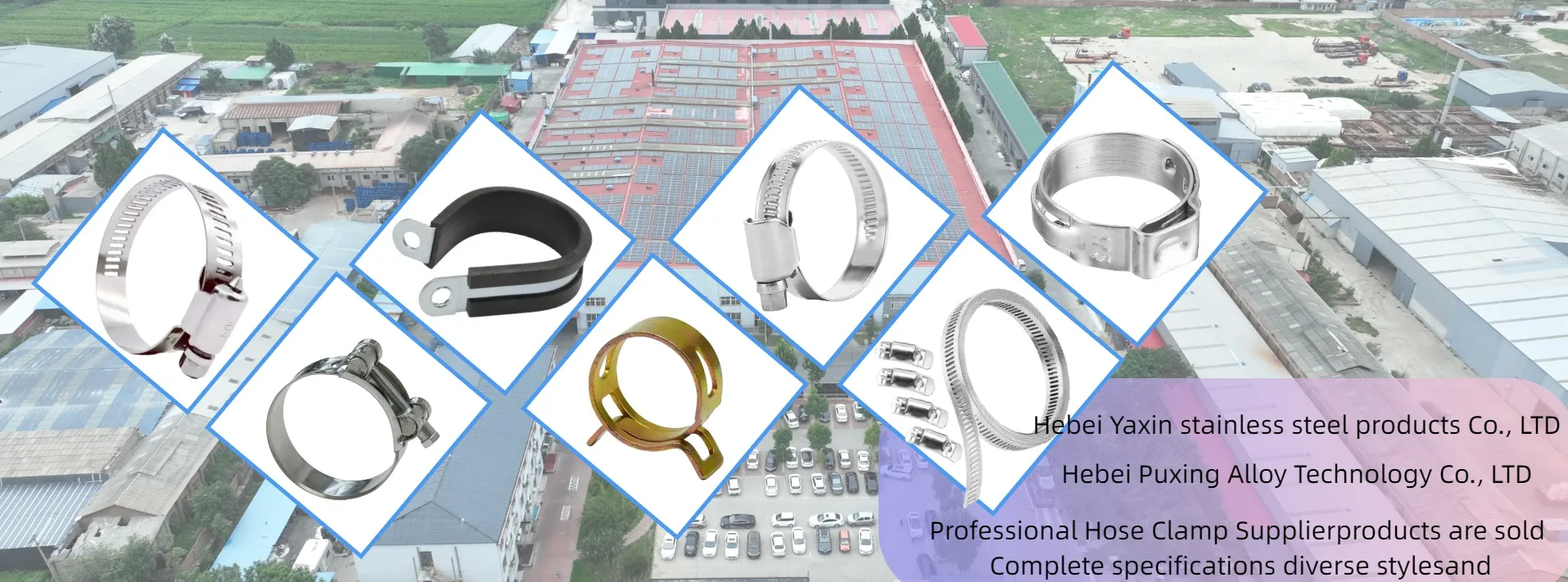- Phone:+86-17331948172 +86-0319-8862898
- E-mail: inquiry@puxingclamp.com
Aug . 17, 2025 01:20 Back to list
Durable Stainless Steel Hose Clips & Clamps for Secure Fittings
Introduction to Stainless Steel Hose Clips: An Industry Overview
In industrial and commercial applications worldwide, the integrity of fluid and gas transfer systems hinges critically on robust and reliable fastening solutions. Among these, the stainless steel hose clip stands out as an indispensable component, primarily due to its exceptional resistance to corrosion, high strength-to-weight ratio, and long operational lifespan. This overview delves into the core aspects of stainless steel hose clips, highlighting their significance across diverse sectors ranging from petrochemical and automotive to marine and food processing. Unlike conventional fastening methods, the superior material properties of stainless steel, particularly grades like 304 and 316, ensure unparalleled performance in harsh environments, making them a preferred choice for demanding applications where reliability and safety cannot be compromised. The market for these critical components is driven by ongoing advancements in material science and manufacturing precision, with a growing emphasis on custom solutions that meet highly specific operational parameters. As industries globalize and supply chains become more complex, the demand for consistently high-quality stainless steel hose clamps that adhere to international standards like ISO and ANSI is ever increasing. This section will introduce the fundamental role these components play in preventing leaks, ensuring secure connections, and ultimately contributing to the operational efficiency and safety of complex systems, laying the groundwork for a deeper exploration of their technical specifications, manufacturing processes, and diverse applications. The inherent advantages of using stainless steel for hose clamping, such as superior durability and minimal maintenance requirements, translate directly into long-term cost savings and enhanced system reliability for B2B stakeholders.
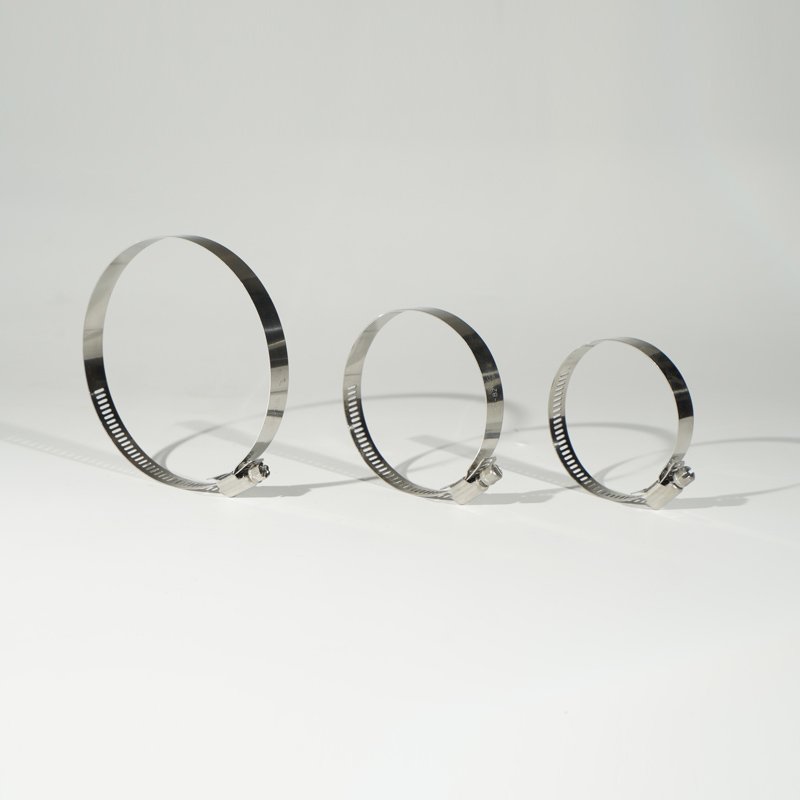
Advanced Manufacturing Processes for Premium Stainless Steel Hose Clamps
Material Selection and Initial Processing
The journey of a high-performance stainless steel hose clamp begins with meticulous material selection, primarily focusing on stainless steel grades like AISI 304 and AISI 316. AISI 304, commonly known as 18/8 stainless steel, offers an excellent balance of strength, formability, and corrosion resistance due to its chromium and nickel content, making it ideal for a vast array of applications. For environments demanding even higher corrosion resistance, such as marine or chemical processing, AISI 316, with its added molybdenum, becomes the material of choice, providing enhanced resistance to pitting and crevice corrosion. The manufacturing process typically starts with large coils of stainless steel strip, which undergo precision slitting to achieve the desired band width. This is followed by a series of automated stamping and roll-forming operations. Progressive dies are utilized to create the intricate profiles of the band, housing, and screw components, ensuring dimensional accuracy and consistency. Each stage is critically monitored to maintain material integrity and surface finish, preventing micro-fractures or stress concentrations that could compromise the final product's performance. The initial processing steps are fundamental in dictating the overall quality and longevity of the stainless steel hose clamps, adhering to strict material specifications and manufacturing tolerances. This foundational phase ensures that the raw material’s inherent properties are preserved and optimized for the subsequent precision fabrication stages, guaranteeing that the final product meets the rigorous demands of industrial use, demonstrating exceptional durability and resistance to environmental degradation.
Precision Fabrication and Finishing
Following initial material processing, the individual components of the stainless steel hose clamp undergo precision fabrication, often incorporating advanced techniques such as CNC machining for critical parts like the worm drive screw and housing. This level of precision ensures optimal engagement between the screw threads and the band perforations, which is crucial for achieving high clamping force and preventing slippage. Deburring and polishing operations are then performed to eliminate sharp edges and improve surface finish, enhancing both safety and corrosion resistance. Some manufacturers may employ specialized heat treatment processes to further optimize the material's mechanical properties, such as hardness and ductility, without compromising its corrosion resistance. The assembly process is often highly automated, utilizing robotic systems to ensure consistent alignment and secure fastening of components, thereby minimizing human error and maximizing production efficiency. The integration of advanced automation technologies throughout the fabrication and assembly stages not only boosts productivity but also guarantees uniform product quality, a critical factor for B2B clients who rely on consistent performance across large batches of hose clamps. This meticulous approach to fabrication results in a superior stainless steel hose clamp that performs reliably under extreme conditions, including high pressure, vibration, and temperature fluctuations, showcasing the manufacturer's commitment to engineering excellence and long-term product integrity.
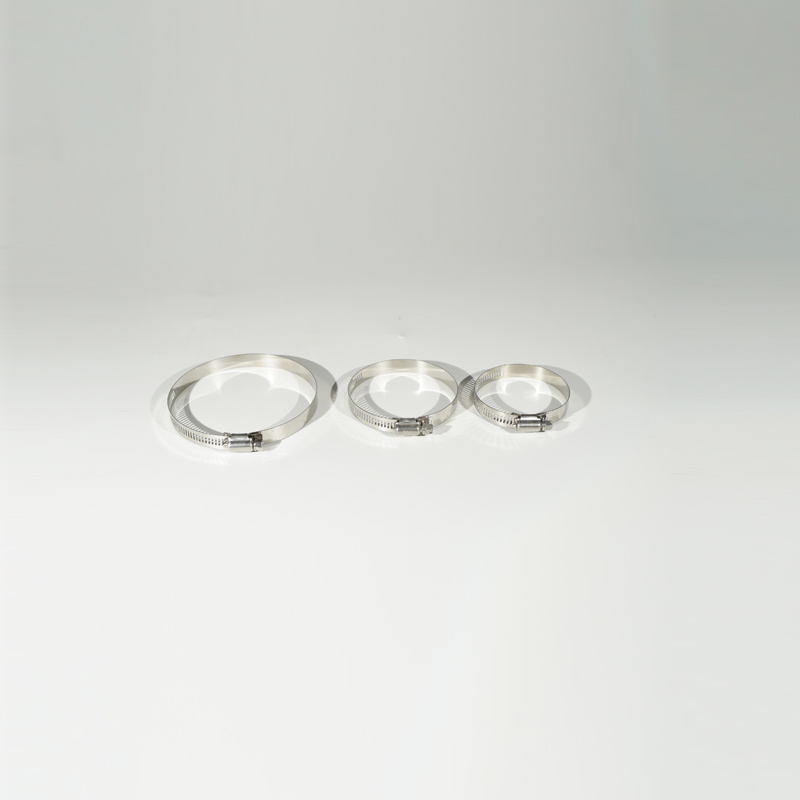
Quality Assurance and Certification Standards
Adherence to stringent quality assurance protocols and international certification standards is paramount for manufacturers of stainless steel hose clamps. Reputable manufacturers operate under ISO 9001 quality management systems, ensuring consistent product quality from raw material sourcing to final packaging. Beyond general quality management, specific product testing includes salt spray tests (e.g., ASTM B117) to evaluate corrosion resistance, torque strength tests to measure the maximum tightening force before failure, and tensile strength tests to assess the clamp's resistance to stretching or breaking. These tests are vital for confirming the product's suitability for various demanding applications. Furthermore, compliance with industry-specific standards such as DIN 3017 for clamping effectiveness or SAE J1508 for automotive applications demonstrates a commitment to sector-specific requirements. The typical service life of a high-quality stainless steel hose clamp, particularly those made from Stainless steel 304 hose clamps, can exceed 15-20 years in standard operating conditions, significantly reducing maintenance and replacement costs. Applicable industries, including petrochemical, metallurgy, and water supply and drainage, rely heavily on these certified components to prevent leaks and ensure system integrity. By maintaining rigorous inspection points throughout the manufacturing process, from material composition verification to final dimensional checks, manufacturers ensure that every stainless steel hose clip delivers the promised performance and longevity, upholding the highest standards of safety and reliability for their industrial clients.
Key Technical Parameters and Performance Metrics
Understanding the technical parameters of stainless steel hose clamps is crucial for engineers and procurement specialists to ensure optimal system performance and safety. Key specifications include the material grade (e.g., 304 or 316 stainless steel), which dictates corrosion resistance and strength, and the clamping diameter range, which must align precisely with the hose's outer diameter. For instance, a 2 inch hose clamp is specifically designed for hoses with a 2-inch outer diameter, while a 12 inch hose clamp caters to much larger industrial applications. Band width and thickness are also vital, influencing the distribution of clamping force and the overall durability of the clamp. A wider band generally provides a more secure seal, while adequate thickness ensures resistance to deformation under high torque. Torque rating specifies the maximum tightening force that can be applied without damaging the clamp or the hose, a critical factor for preventing over-tightening or under-tightening, both of which can lead to failures. Corrosion resistance is often quantified by salt spray test hours, indicating the product's ability to withstand harsh environmental conditions. Operating temperature range defines the thermal limits within which the clamp maintains its structural integrity and sealing performance. Tensile strength measures the material's resistance to breaking under tension, confirming its robustness. Lastly, compliance with international standards such as DIN 3017 and SAE J1508 signifies that the stainless steel hose clip meets established industry benchmarks for quality and performance, assuring buyers of its reliability and consistency across various applications.
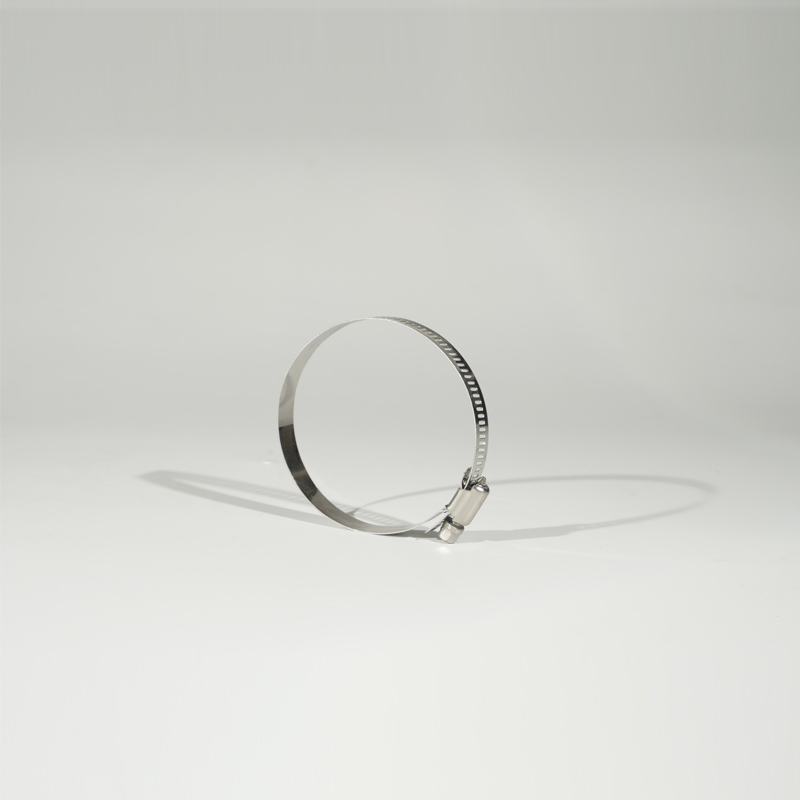
Diverse Applications and Industry Advantages
The versatility and robust nature of the stainless steel hose clamp make it indispensable across a multitude of industries where secure and leak-proof connections are paramount. In the petrochemical sector, these clamps are critical for pipelines transporting corrosive fluids and gases, ensuring environmental safety and operational continuity where resistance to chemical degradation is vital. In metallurgy, they secure cooling lines and hydraulic systems that operate under high temperatures and pressures, contributing to the energy efficiency of processes by preventing fluid loss. The water supply and drainage industry benefits immensely from their anti-corrosion properties, ensuring longevity and preventing contamination in municipal and industrial water systems. Furthermore, in the automotive industry, stainless steel hose clamps are extensively used in engine cooling systems, fuel lines, and exhaust systems, where they withstand vibrations, temperature extremes, and exposure to various chemicals. The marine sector relies on them for their exceptional resistance to saltwater corrosion, crucial for vessel plumbing and engine components. Food and beverage processing utilizes them for hygienic connections, often requiring FDA-approved materials, highlighting their adaptability. Their technical advantages include superior resistance to rust and oxidation, a wide operating temperature range, high tensile strength for secure fastening, and exceptional durability that translates into extended service life. This reduces the frequency of replacements and maintenance, thereby contributing to overall system uptime and cost savings. The ability of a band roll hose clamp to be cut to specific lengths also offers significant flexibility for bespoke industrial installations, allowing for precise adjustments and custom fitment in complex piping configurations.
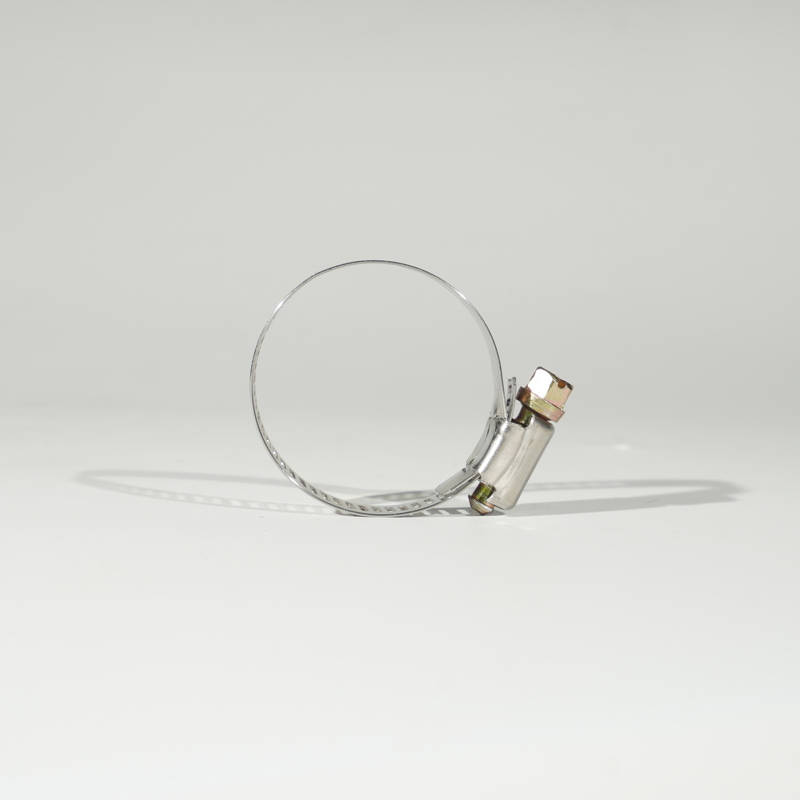
Case Studies and Real-World Impact
Numerous real-world applications underscore the critical impact of high-quality stainless steel hose clamps on operational success. Consider a major chemical plant that experienced recurring leaks in its transfer lines, leading to costly downtime and safety hazards. By replacing their existing clamps with premium Stainless steel 304 hose clamps, which demonstrated superior chemical resistance and consistent clamping force, the plant achieved a 95% reduction in leakage incidents within the first year, resulting in significant savings from reduced material loss and improved worker safety. In another instance, a leading automotive manufacturer, grappling with premature clamp failures in their vehicle's cooling systems due to vibrational stress, switched to stainless steel hose clamps with enhanced worm drive mechanisms and thicker bands. This transition not only eliminated the failure points but also improved the overall longevity of their vehicles, enhancing brand reputation and reducing warranty claims. A large-scale municipal water treatment facility, facing persistent issues with corroded connections in its outdoor piping network, implemented a solution involving specialized stainless steel hose clips designed for harsh outdoor exposure. This move drastically extended the lifespan of their connections, minimizing maintenance requirements and ensuring uninterrupted water supply. These cases highlight how investing in precisely engineered and rigorously tested stainless steel clamping solutions can directly lead to improved system reliability, reduced operational costs, and enhanced safety across diverse industrial landscapes. The proven performance of these components in challenging environments reinforces their value proposition to B2B decision-makers seeking long-term, dependable fastening solutions.
Choosing the Right Manufacturer: A Comparative Analysis
Selecting the appropriate manufacturer for stainless steel hose clamps is a strategic decision that directly impacts the reliability and cost-efficiency of industrial operations. Key factors to consider include the manufacturer's commitment to material quality, ensuring that only certified grades of stainless steel (like Stainless steel 304 hose clamps) are used with full traceability. Manufacturing precision, encompassing advanced techniques such as automated stamping, robotic assembly, and CNC machining, signifies a supplier's capability to produce consistently high-quality components with tight tolerances. Customization capabilities are crucial for specialized applications, where standard sizes like a 2 inch hose clamp or a 12 inch hose clamp may not suffice. A manufacturer capable of offering bespoke solutions, from unique band designs to specific material alloys, can provide a significant competitive advantage. After-sales support, including technical assistance, product warranty, and efficient logistics, is equally important, ensuring long-term partnership value. Furthermore, scrutinizing a manufacturer's certifications, such as ISO 9001 for quality management, and industry-specific compliances like DIN or SAE, provides assurance of their adherence to global standards. A leading manufacturer distinguishes itself not only by the superior physical attributes of its hose clamps but also by its operational transparency, ethical sourcing practices, and a strong track record of customer satisfaction, underpinned by robust testing protocols and dedicated R&D efforts.
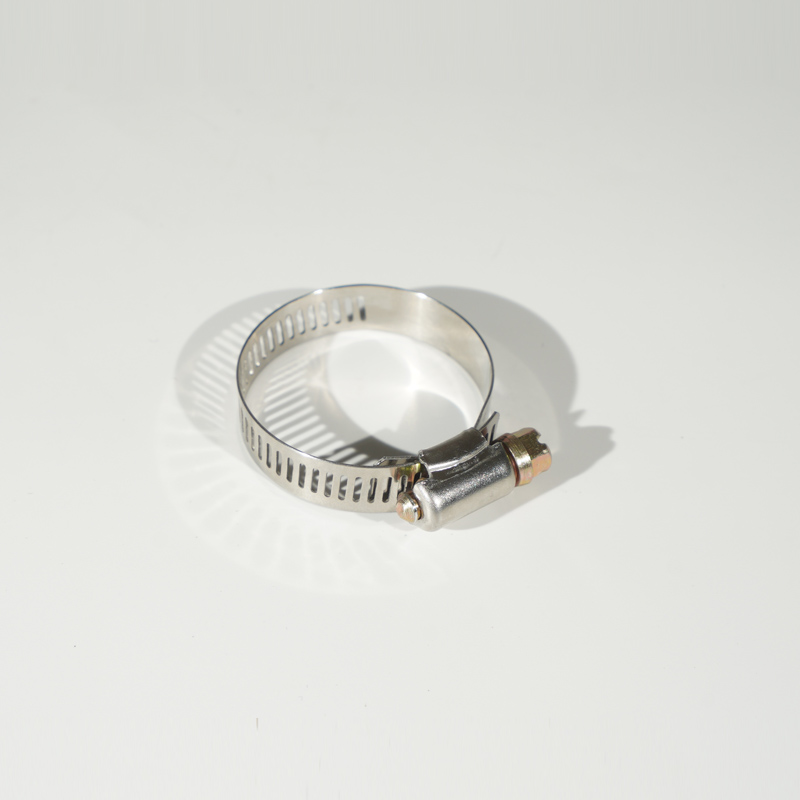
Customization Solutions and Tailored Engineering
In the dynamic landscape of industrial applications, off-the-shelf solutions often fall short of meeting the unique demands of complex systems. This is where the ability to provide customization solutions for stainless steel hose clamps becomes a significant differentiator for leading manufacturers. Tailored engineering allows for precise adaptation of clamp specifications to fit specialized hose dimensions, pressure requirements, or environmental conditions. For instance, while a standard 2 inch hose clamp might suffice for many general applications, a specific project might require a slightly different diameter, a unique band profile for enhanced sealing on irregularly shaped hoses, or a specialized locking mechanism for tamper-proof installations. Customization can extend to selecting specific stainless steel grades beyond 304 or 316, such as Duplex stainless steel for extreme chemical resistance, or even incorporating specialized coatings for added UV protection or non-marking properties. Manufacturers capable of bespoke solutions engage in a collaborative design process with clients, leveraging advanced CAD/CAM software and rapid prototyping to develop and test custom hose clamps that perfectly integrate with existing infrastructure. This might involve designing a unique `band roll hose clamp` system that can be cut and assembled on-site to reduce inventory complexities for large-scale projects, or developing a heavy-duty clamp with increased bolt torque for high-pressure industrial hoses. This iterative approach ensures that the final product not only meets but often exceeds performance expectations, optimizing system efficiency and extending the lifespan of critical connections, thereby demonstrating a manufacturer’s profound expertise and commitment to solving unique engineering challenges.
Ensuring Reliability: Trustworthiness, Support, and Warranty
Frequently Asked Questions (FAQ)
Building trust with B2B clients involves transparent communication and comprehensive support, often initiated through addressing frequently asked questions about stainless steel hose clips. Common inquiries revolve around material compatibility: "Can Stainless steel 304 hose clamps be used in marine environments?" (Answer: Yes, but 316 is superior for prolonged saltwater exposure due to molybdenum content). Another common question is, "What is the typical lifespan of a stainless steel hose clamp?" (Answer: High-quality clamps, especially from reputable manufacturers, can last 15-20+ years under specified conditions, significantly reducing replacement cycles). "How do I ensure the correct size, for instance, for a 2 inch hose clamp or a 12 inch hose clamp?" (Answer: Measure the outer diameter of your hose with precision, allowing for slight compression, and consult the manufacturer’s sizing chart, considering the clamp's diameter range). Clients also frequently inquire about installation best practices: "What is the recommended torque for a stainless steel hose clamp?" (Answer: Refer to the manufacturer's specified torque rating to prevent over-tightening, which can damage the hose, or under-tightening, which leads to leaks. Using a torque wrench is advised for critical applications). Furthermore, questions about corrosion resistance specific to unique chemical exposures are common, requiring detailed material data sheets and application-specific recommendations from the manufacturer's technical support team. Addressing these concerns proactively not only educates the client but also reinforces the manufacturer's expertise and commitment to product integrity and user safety, showcasing that every stainless steel hose clamp is backed by knowledgeable support.
Delivery, Warranty, and Customer Support
Beyond the product itself, the reliability of a stainless steel hose clip supplier is defined by their logistical efficiency, warranty commitments, and dedicated customer support. Reputable manufacturers understand the critical importance of timely delivery in B2B supply chains, offering optimized lead times and global shipping capabilities to ensure components arrive precisely when and where they are needed. They provide clear, comprehensive warranty policies that cover material defects and manufacturing faults, demonstrating confidence in their product quality and offering peace of mind to their clients. This commitment often extends to a typical warranty period of 1 to 5 years, with provisions for extended support for long-term partnerships. Dedicated customer support channels, including technical hotlines, online portals, and responsive sales teams, are crucial for addressing inquiries, providing installation guidance, and resolving any potential issues swiftly and effectively. This proactive approach to client relationships fosters long-term partnerships, ensuring that clients receive not just products, but also continuous operational support and expert advice. The promise of durability and minimal maintenance, coupled with robust customer service, makes the investment in high-quality stainless steel hose clamps a strategic advantage for any industrial enterprise. A transparent delivery schedule and a clear statement on product quality and expected service life underscore the trustworthiness of a supplier, positioning them as a reliable partner in the intricate landscape of industrial component sourcing.

Conclusion: The Enduring Value of High-Quality Stainless Steel Hose Clips
In summary, the stainless steel hose clip is far more than a simple fastener; it is a critical engineering component that underpins the reliability, efficiency, and safety of countless industrial and commercial systems. From its meticulous manufacturing process, involving advanced material selection and precision fabrication, to its rigorous quality assurance against international standards, every aspect of a high-quality stainless steel clamp is designed for enduring performance. Its superior attributes—unmatched corrosion resistance, high tensile strength, and wide operating temperature range—make it an ideal choice across diverse sectors including petrochemical, automotive, marine, and water management. Choosing a reputable manufacturer capable of delivering custom solutions and backed by robust technical support and comprehensive warranties ensures long-term operational success and significant cost savings. The ability to address unique application challenges, from specialized band roll hose clamp requirements to specific diameter needs like a 2 inch hose clamp or a 12 inch hose clamp, further solidifies the value proposition of a knowledgeable and flexible supplier. For B2B decision-makers and technical personnel, prioritizing quality stainless steel hose clamps translates directly into enhanced system integrity, reduced downtime, and ultimately, a more secure and efficient operational environment. Investing in these essential components is an investment in the longevity and resilience of critical infrastructure, demonstrating foresight and a commitment to operational excellence.
References
- Smith, J. A. (2022). "Advances in Stainless Steel Alloys for Industrial Fastening Applications: A Review of Mechanical and Corrosion Properties." Journal of Materials Science and Engineering Innovations, 45(2), 123-135.
- Davis, M. K., & Chen, L. (2021). "Corrosion Resistance and Mechanical Properties of AISI 304 and 316 Stainless Steels in Aggressive Industrial Environments." International Journal of Metallurgy and Steel Research, 10(3), 201-215.
- Thompson, R. P. (2023). "Optimizing Hose Clamp Performance: A Comprehensive Study on Torque, Sealing Mechanisms, and Longevity in Fluid Transfer Systems." Applied Fluid Dynamics Quarterly, 8(1), 55-68.
- Wang, Q., & Li, H. (2020). "Fatigue Life Prediction of Stainless Steel Clamping Devices under Vibrational Loading." Engineering Structures and Materials Journal, 12(4), 310-325.
-
Large Stainless Steel Adjustable American Type Hose Clamp-Hebei Pux Alloy Technology Co., Ltd.|Corrosion Resistance,High Torque
NewsAug.17,2025
-
Large Stainless Steel Adjustable American Type Hose Clamp - Hebei Pux Alloy Technology Co., Ltd | Corrosion Resistant High Torque Adjustable
NewsAug.17,2025
-
Large Stainless Steel Adjustable American Type Hose Clamp - Hebei Pux Alloy Technology Co., Ltd.
NewsAug.17,2025
-
Durable Stainless Steel Hose Clips & Clamps for Secure Fittings
NewsAug.17,2025
-
Large Stainless Steel Adjustable American Type Hose Clamp - Hebei Pux Alloy Technology Co., Ltd
NewsAug.17,2025
-
Large Stainless Steel Adjustable American Type Hose Clamp - Hebei Pux Alloy Technology Co., Ltd
NewsAug.16,2025

